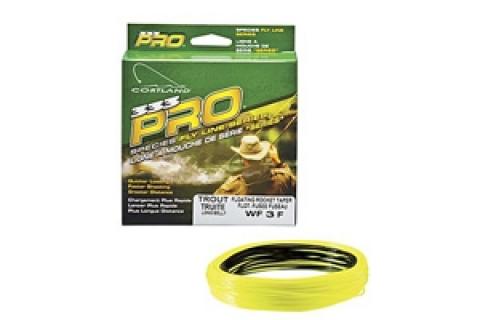
As I write this, the thermometer outside my house reads -29 F (-34 Celcius) and the ice continues to thicken on our lakes. So I guess this seems like an odd time to be thinking of open water fishing. But what else is a dedicated fly angler to do?
 |
| Sink-tip lines are useful when casting parallel along drop offs or weed-line edges. |
The thought process began again the other day I visited my trusty fly rods and took stock of the flies I will unleash upon the open waters at ice out. As I plotted and reminisced about seasons past, it occurred to me that most of my lake fishing these days is done with streamers or wet flies and a good sink-tip line.
In my case, I use a fast sinking line and the countdown method to find where the fish are and then keep touch with them.
This method is key when fishing with sink tip lines.
The sink rate given on sink tip lines determines how quickly you can get your fly down to productive parts of the water column. The countdown method allows you to use that known sink rate to consistently understand how deep you are fishing. For instance, if you have a line that sinks 4 inches a second and you want to start fishing 5 feet below surface, count to 15 in one second intervals. This will allow the line to sink to that level so you can be sure that your fly is working in and around 5 feet — provided you have a reasonably short leader. (Longer ones might keep the fly lagging on the drop.)
If no hits are forthcoming, you might decide to fish deeper, say at 8 feet — which would mean you'd count to 24. The idea is to experiment with fishing at different depths until you find the level active fish are at. It's fairly straightforward.
This method is particularly effective when partnered with a depth finder. For instance, if your electronics tell you the top of a huge boulder rises to 7 feet below the surface, then you can accurately guess the count it will take to get the fly down to skim over the top or beside this fish holding structure.
Sink-tip lines are also useful along drop offs or weed line edges, especially if you cast parallel to these structures. And they work equally well fishing the length of long points, especially when you let the line sink deeper to keep touch with the structure.
What I'm saying is that if you don't have a sink-tip line for lake fishing, you are missing out on a lot of great fly angling opportunities. They are certainly not the be all and end all, but they sure make a difference when fish aren't surface oriented.
That thought alone will keep me warm till spring.
- 3196 views

